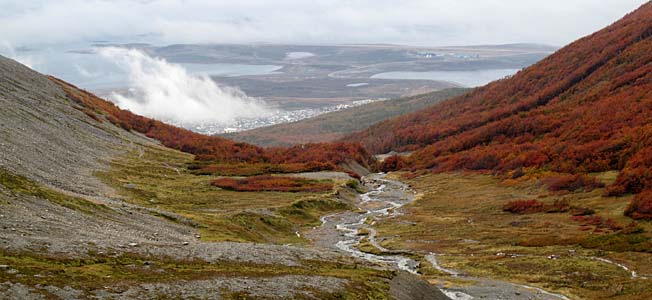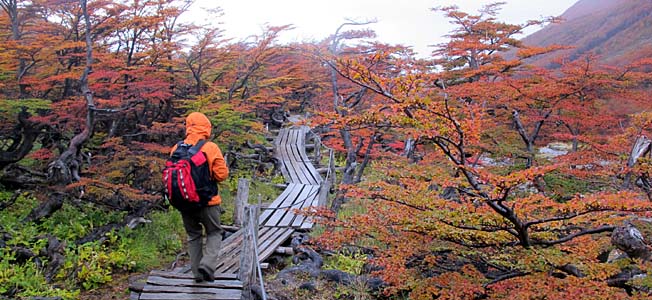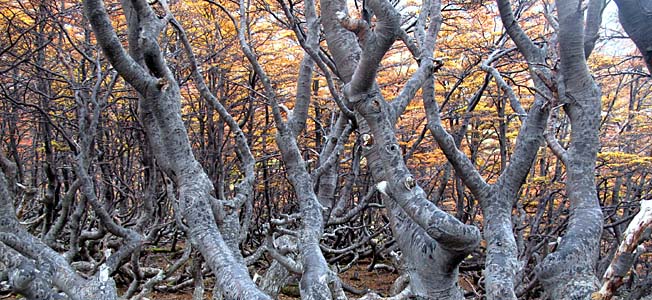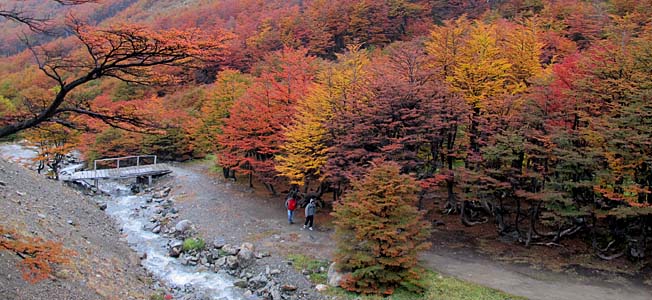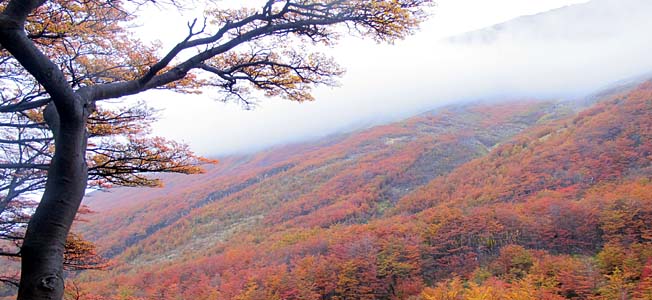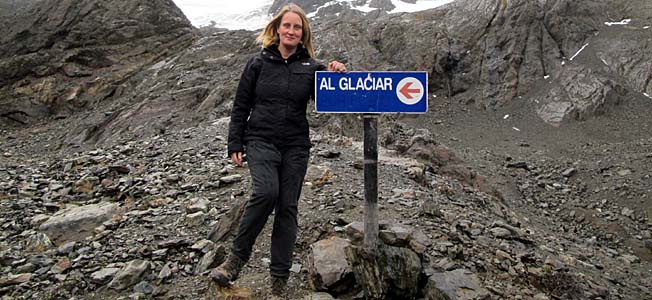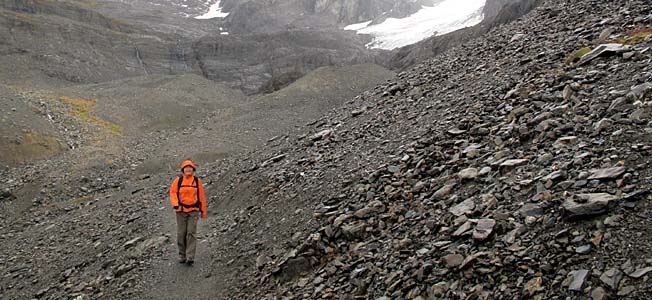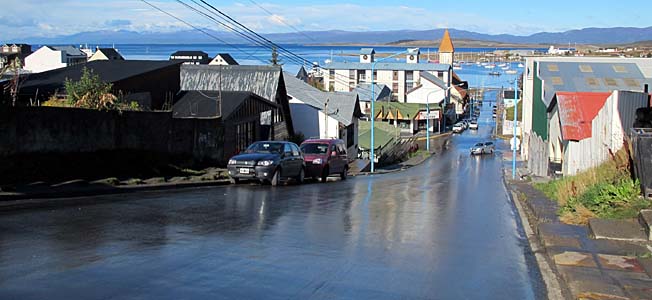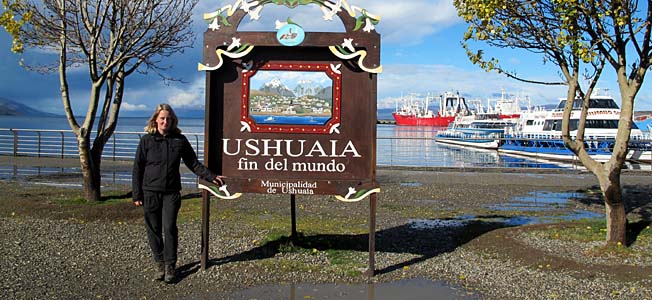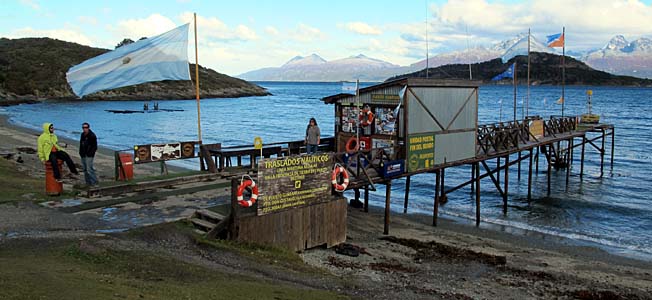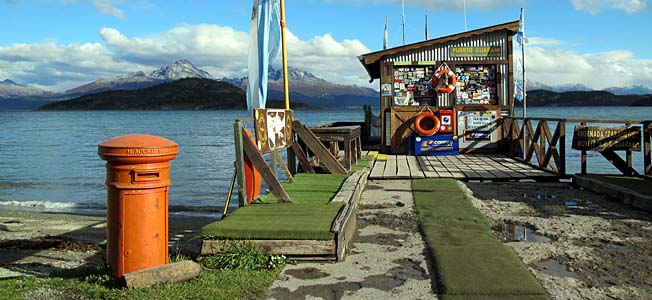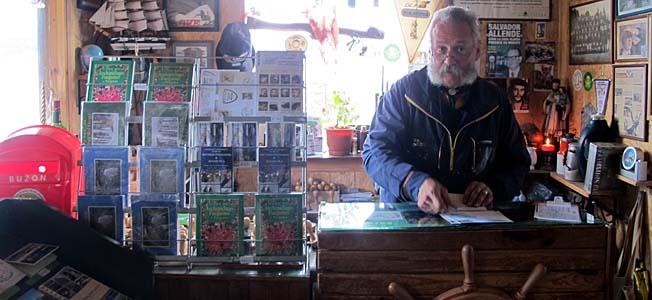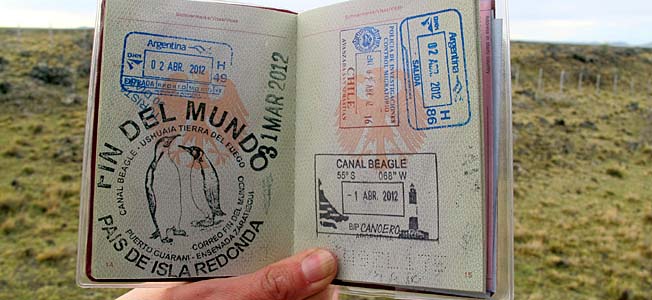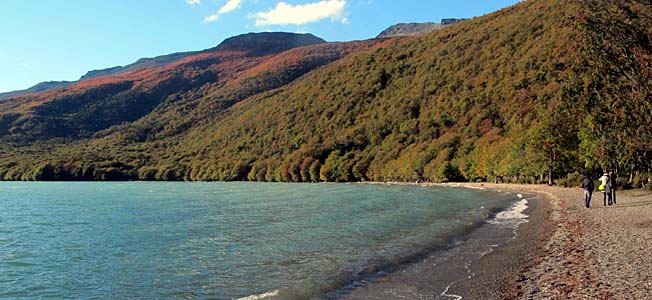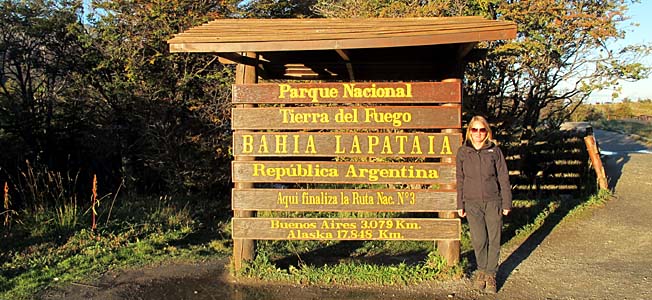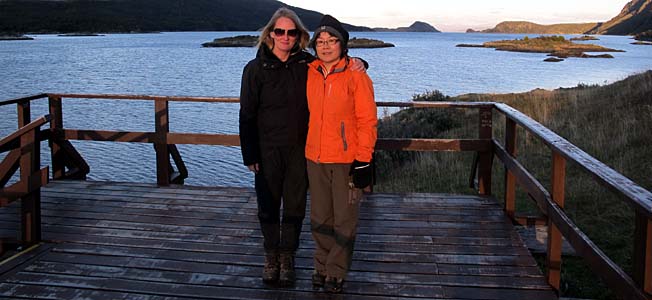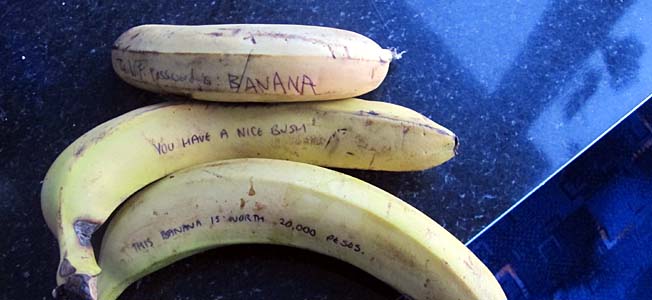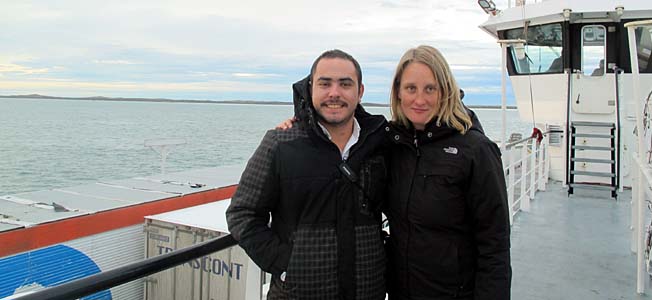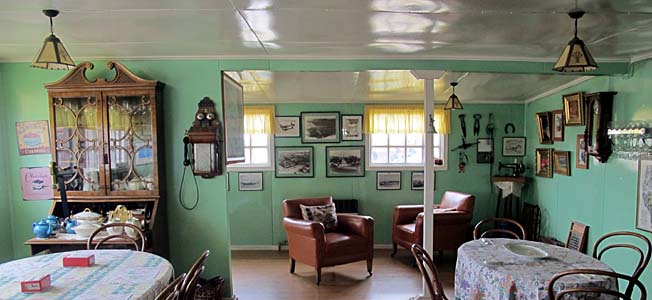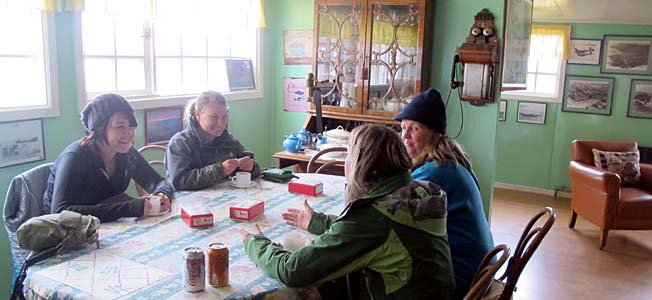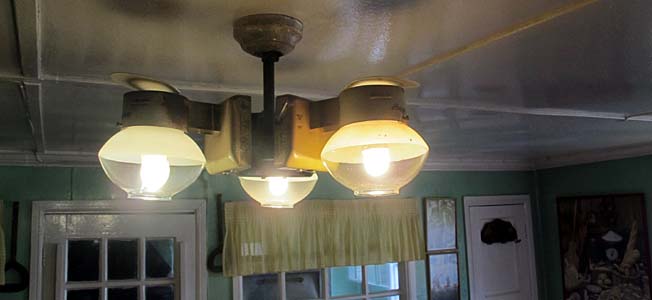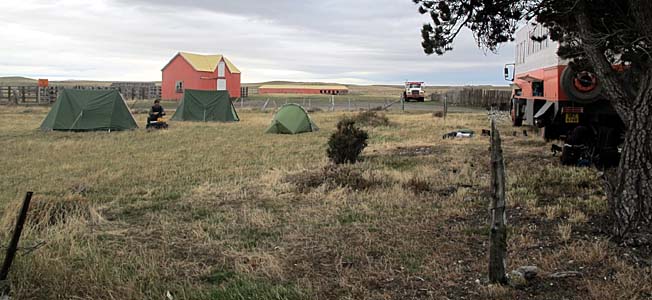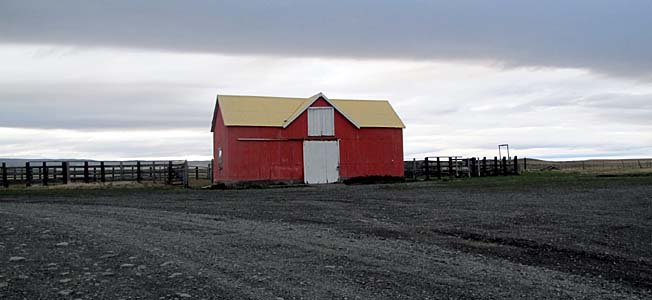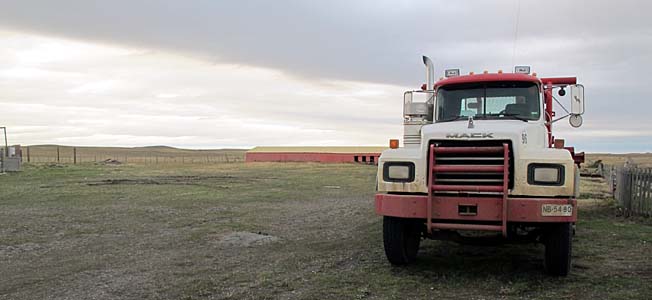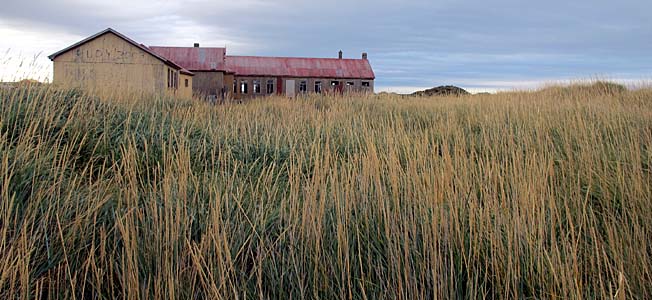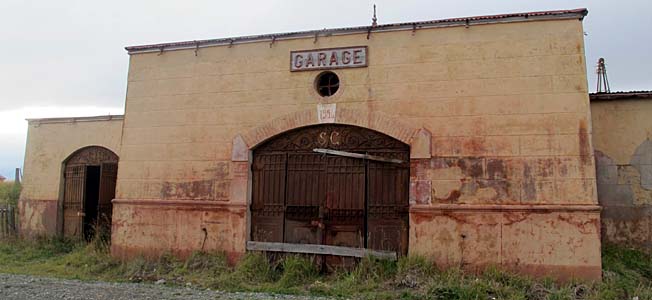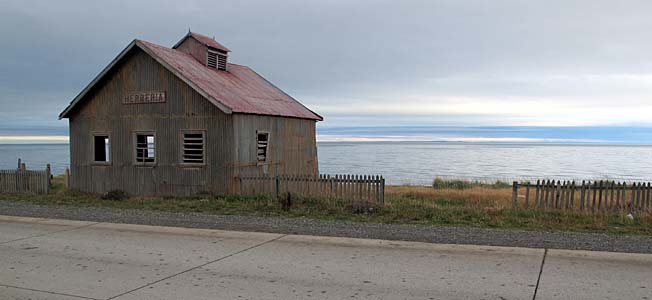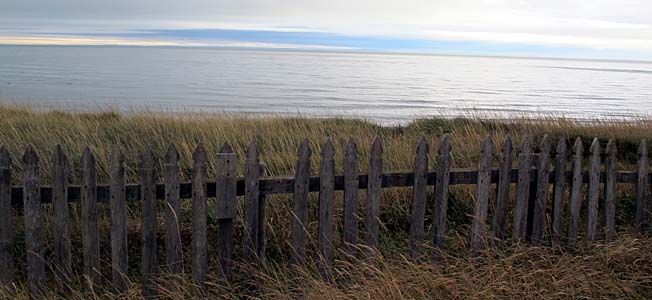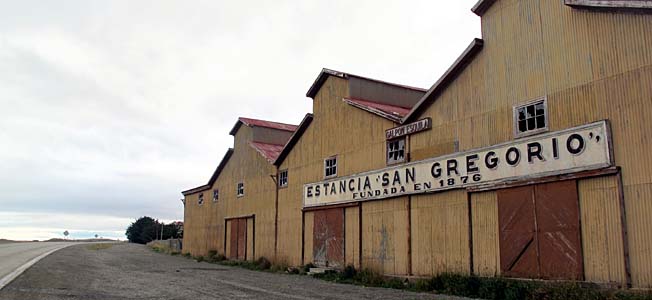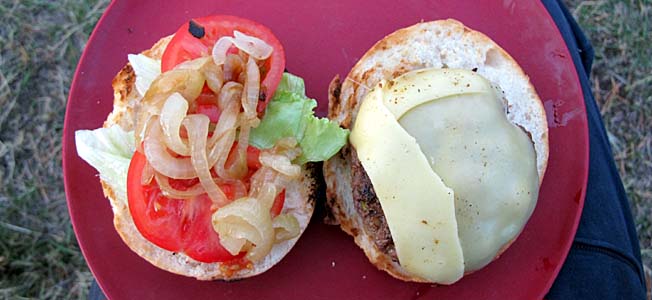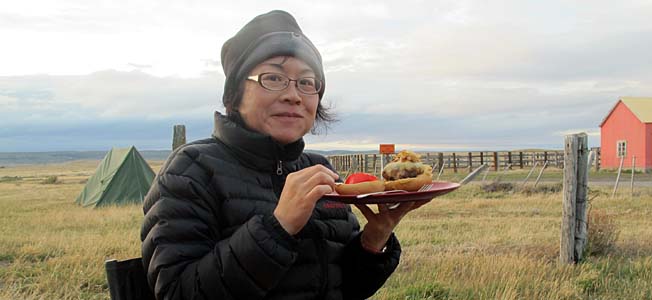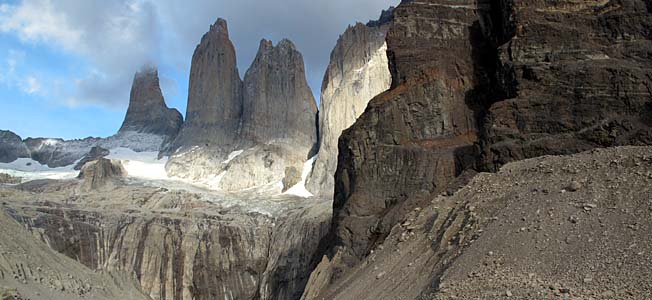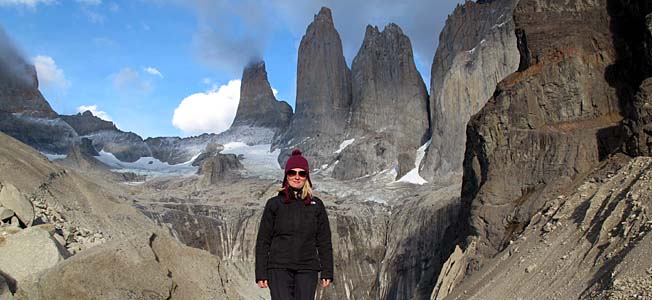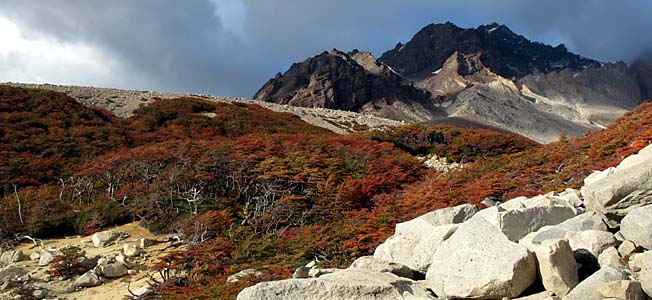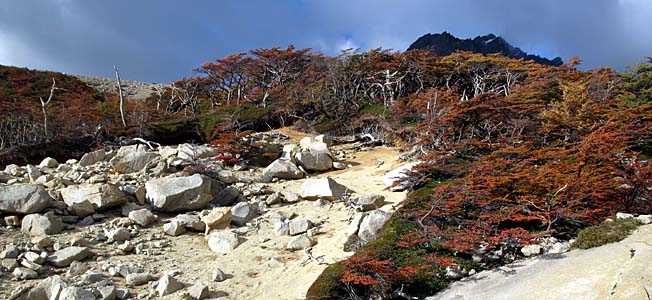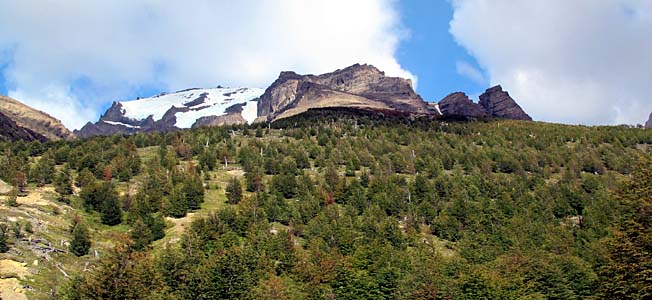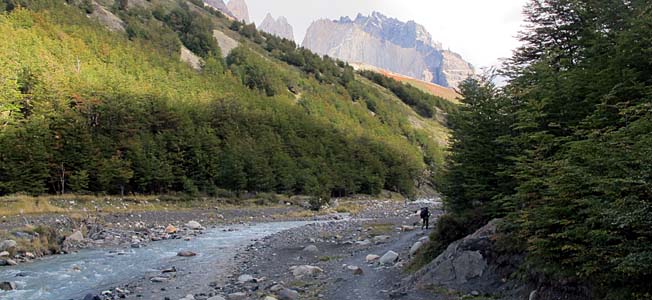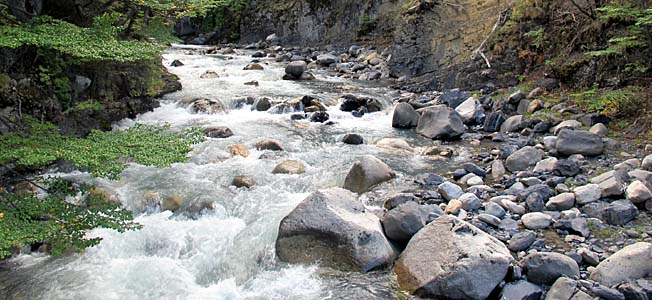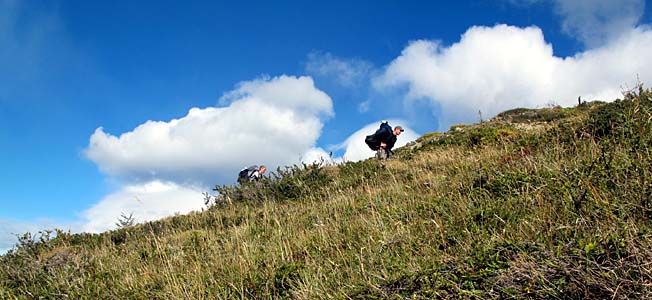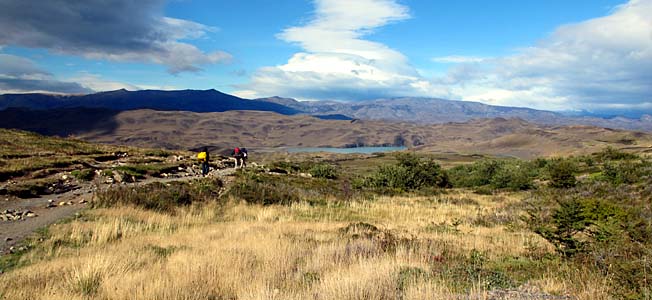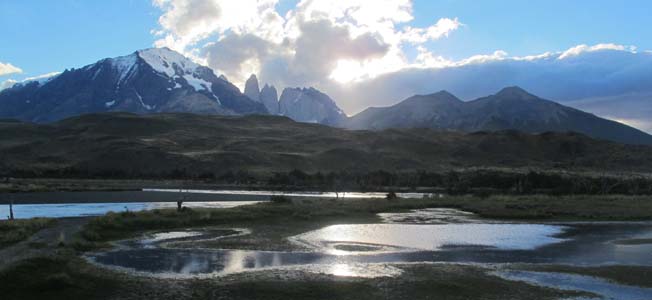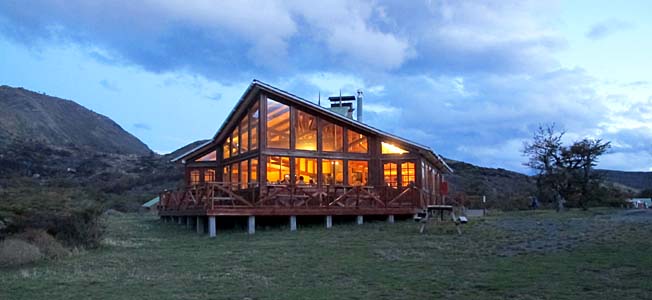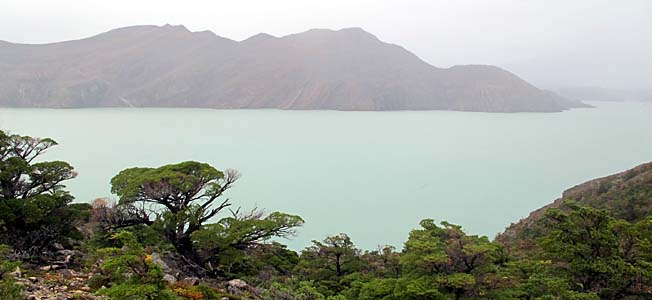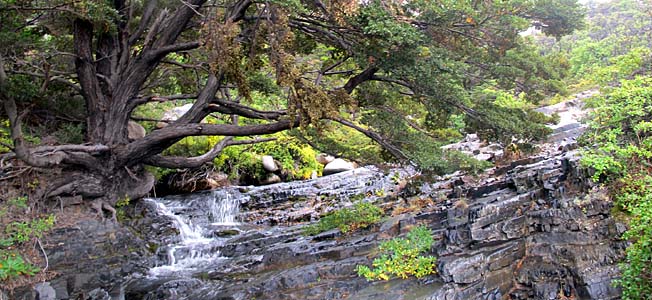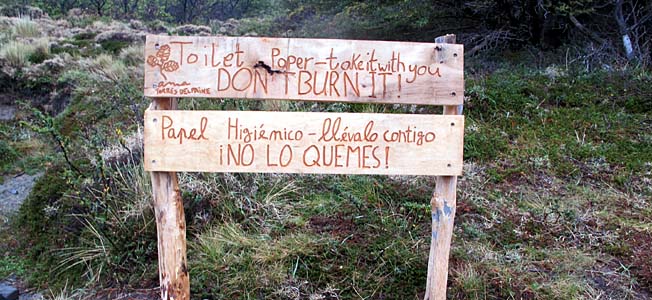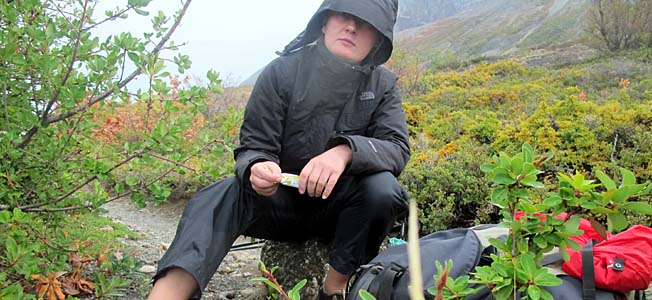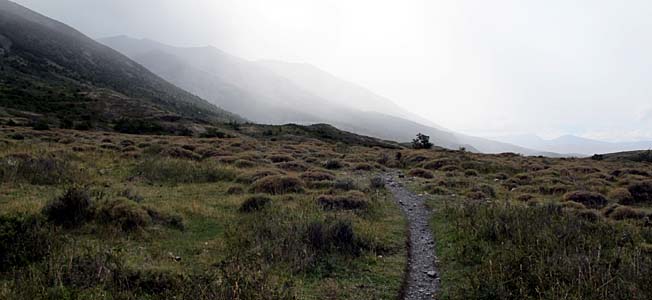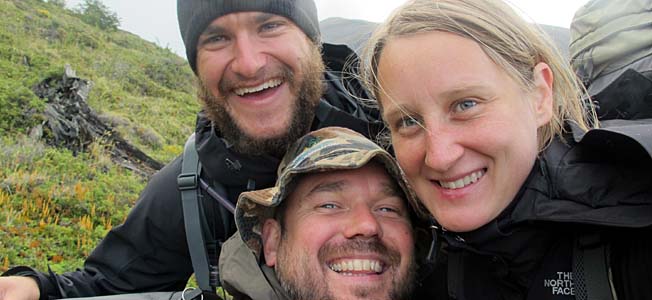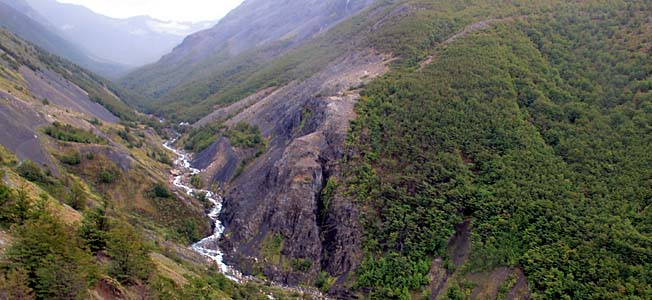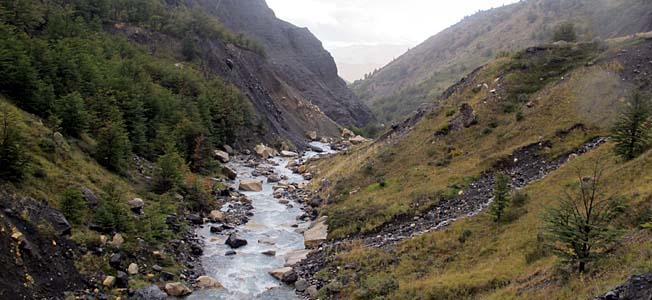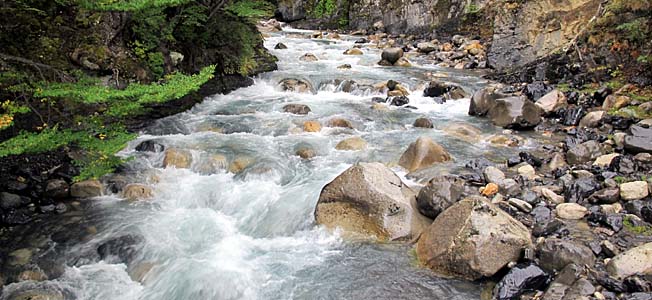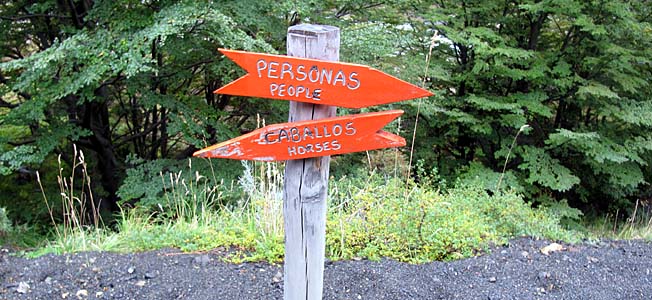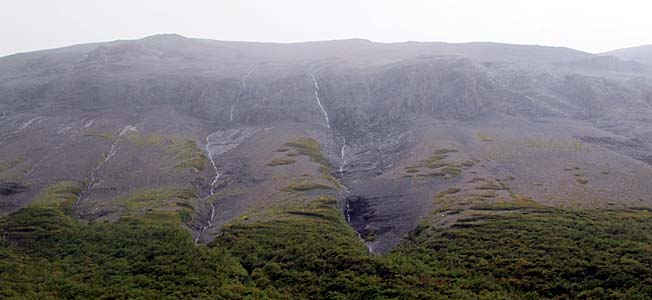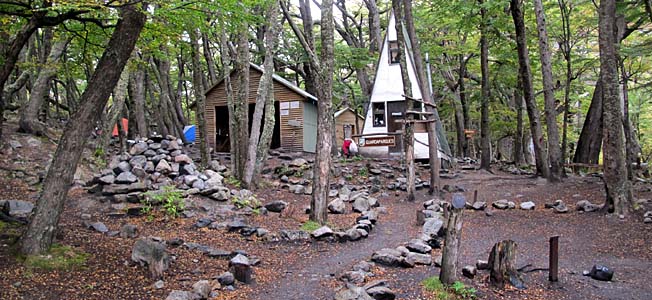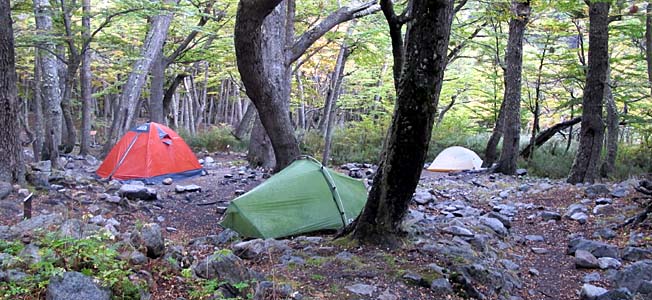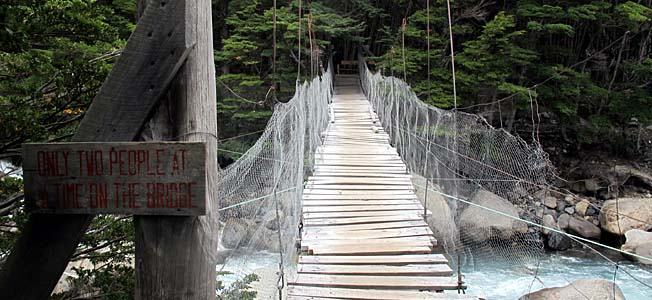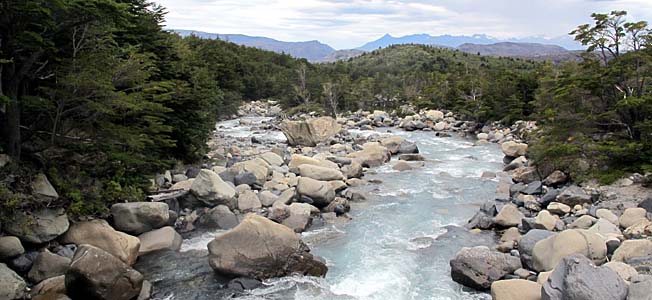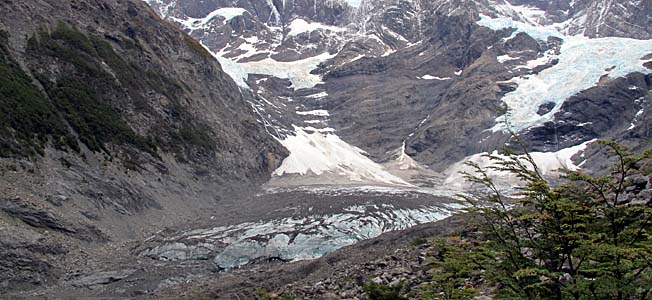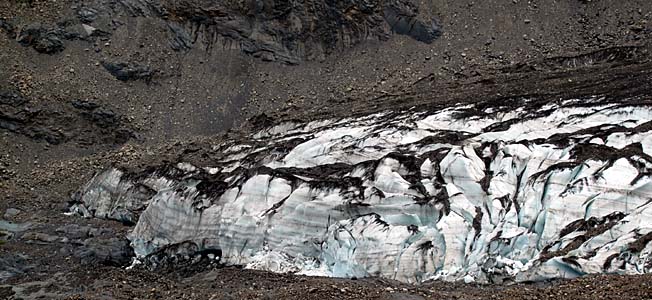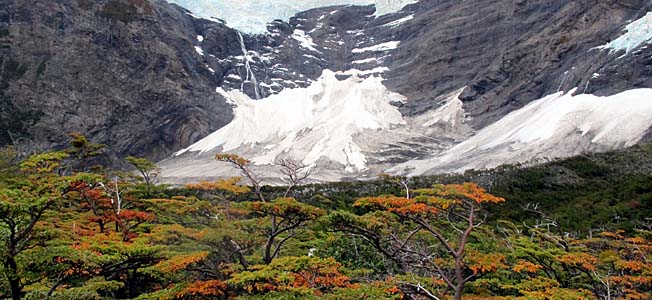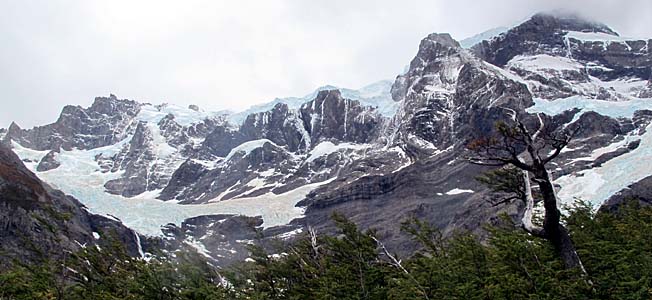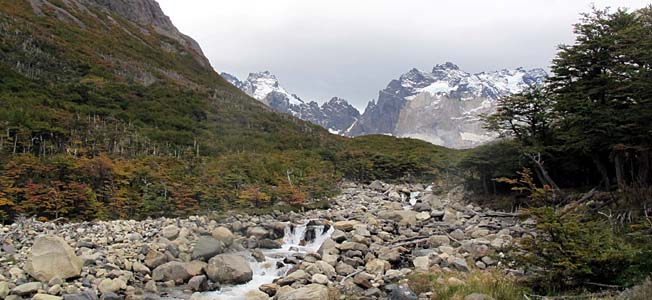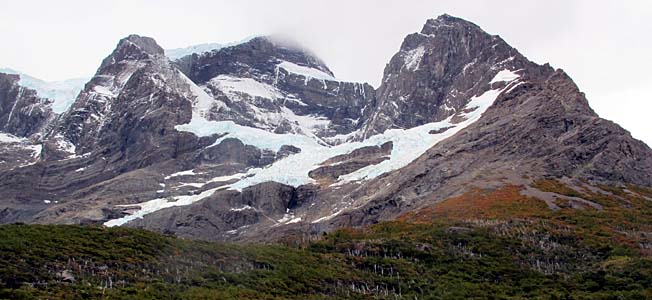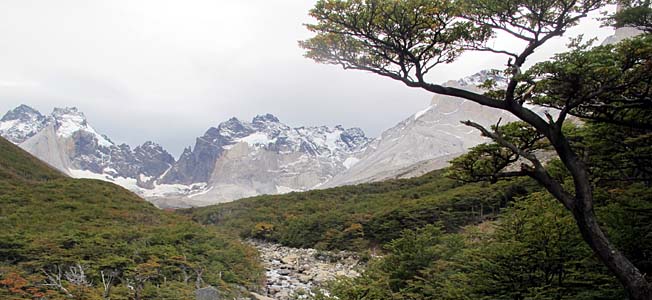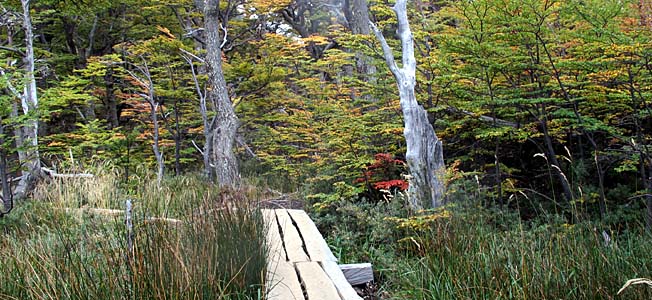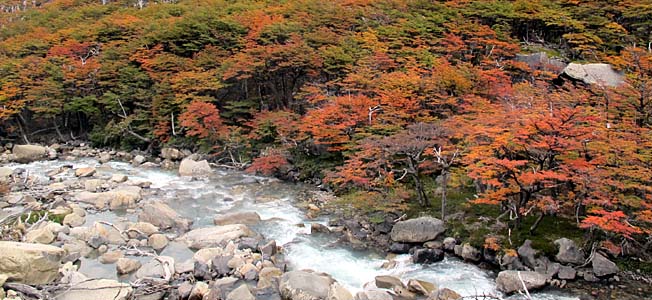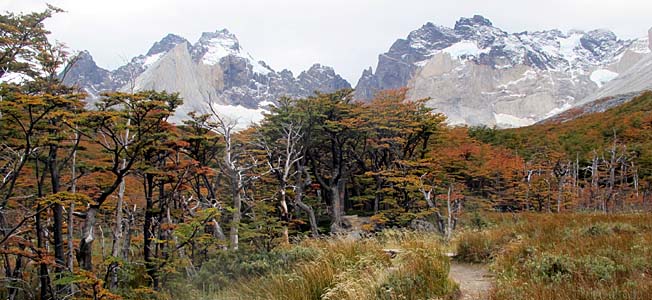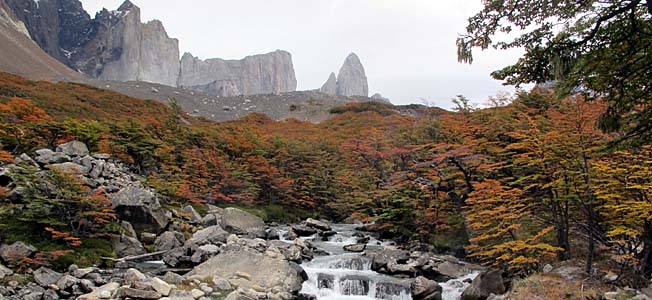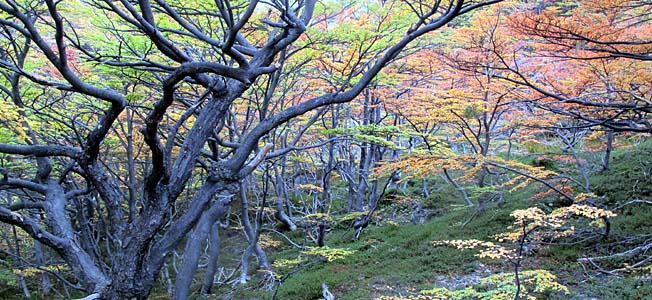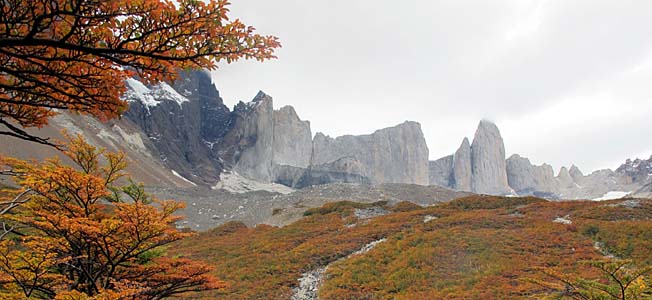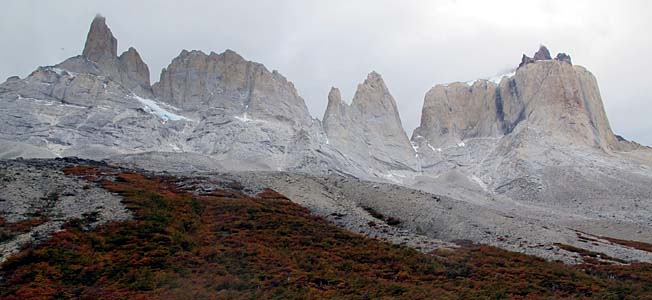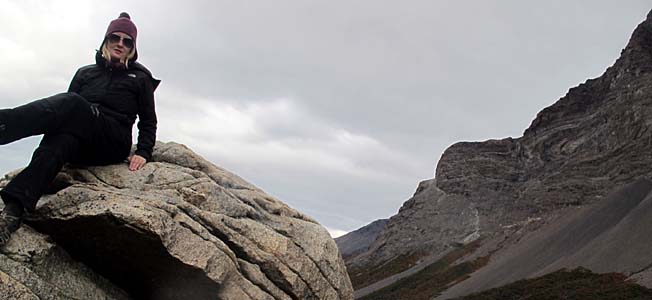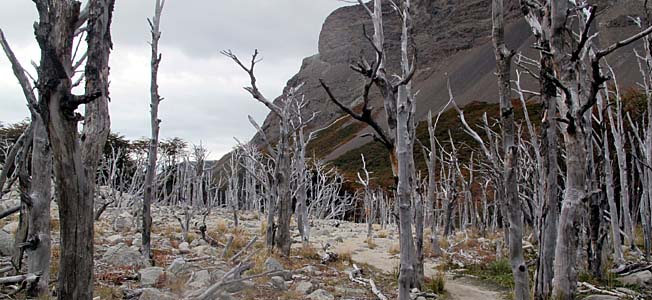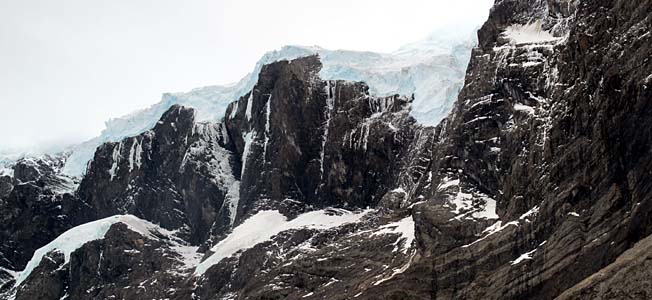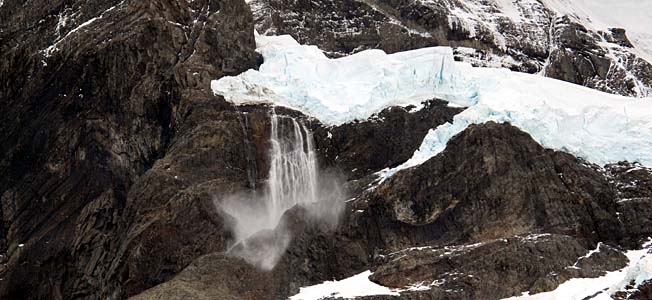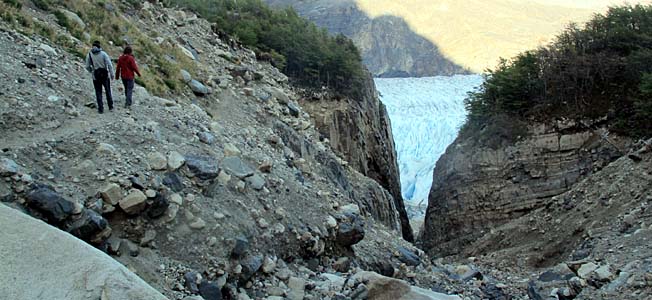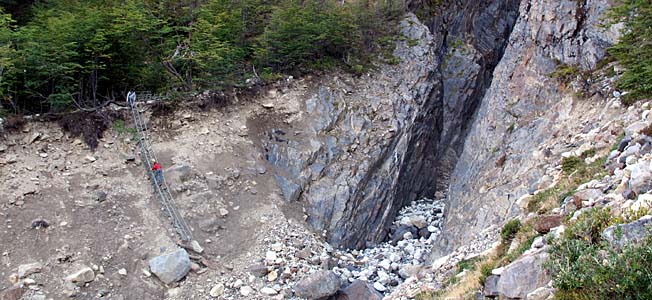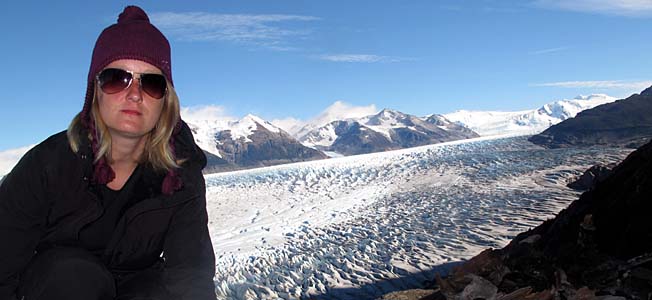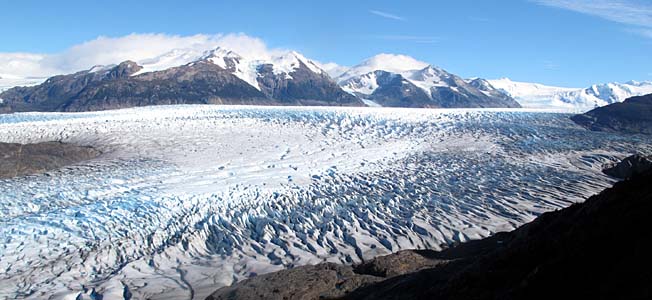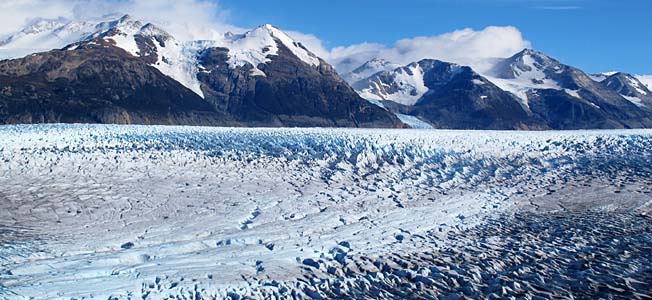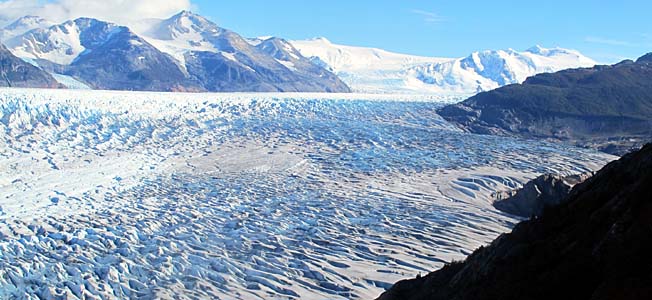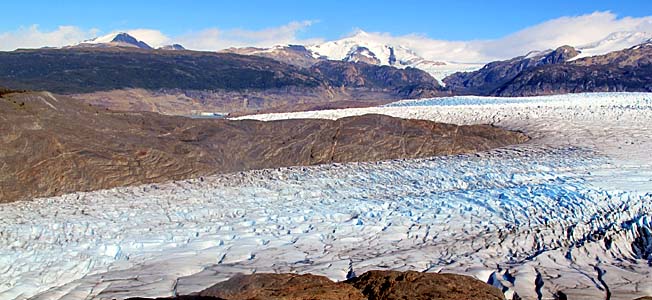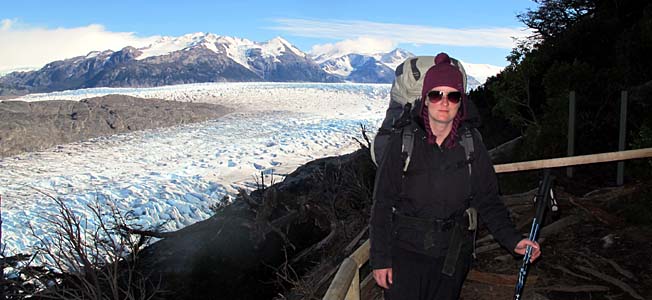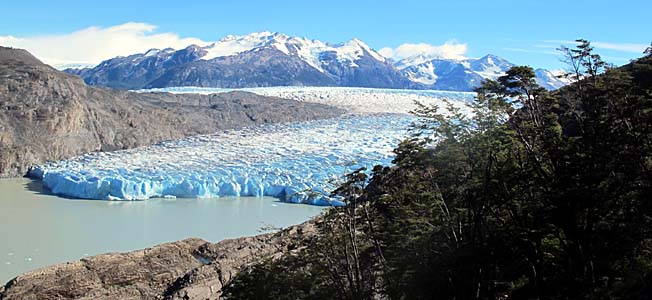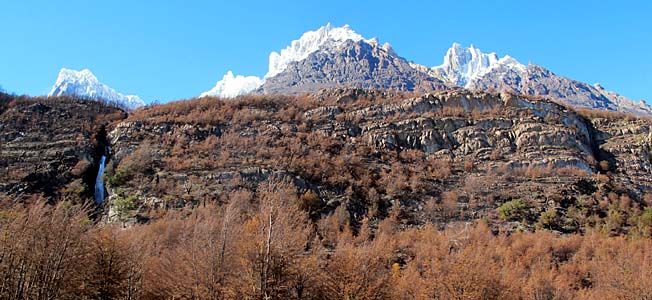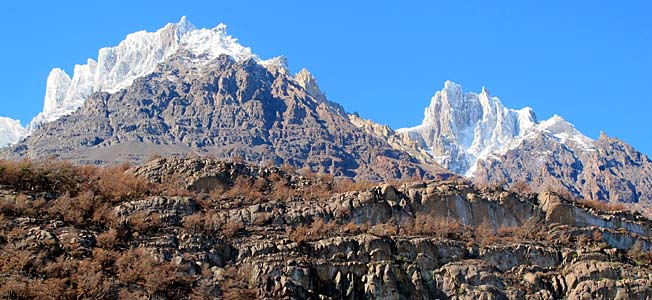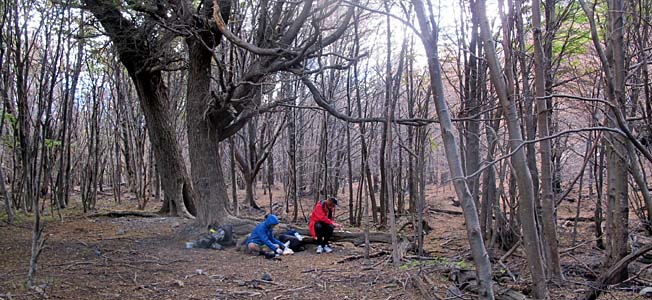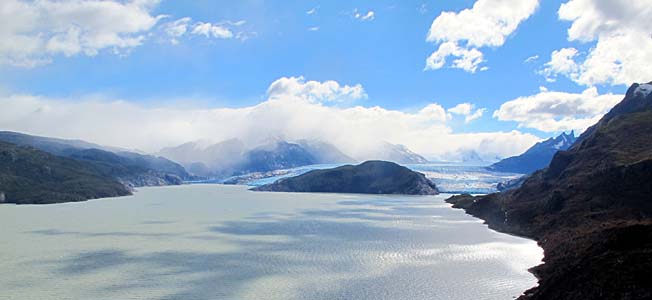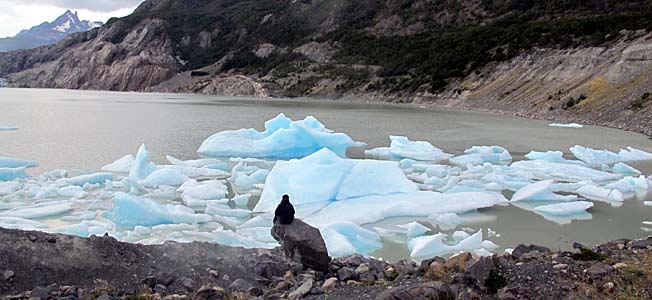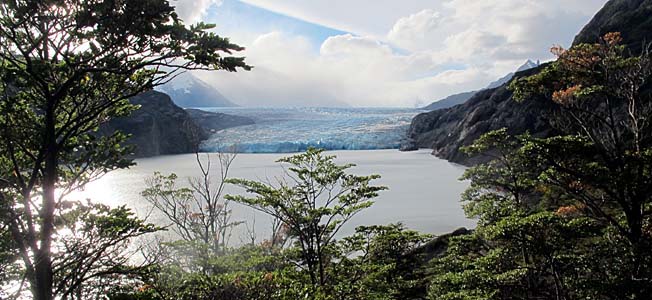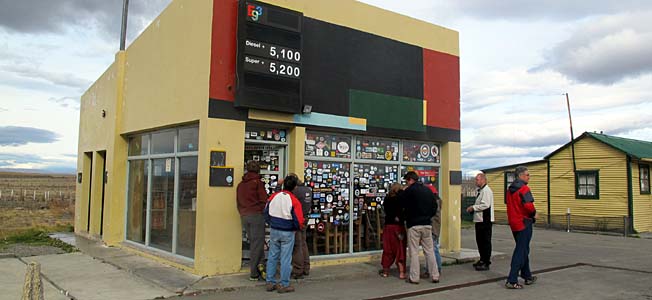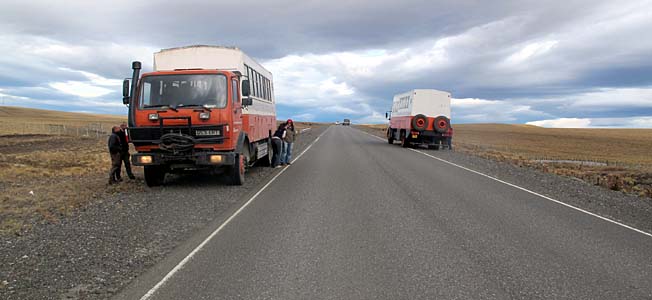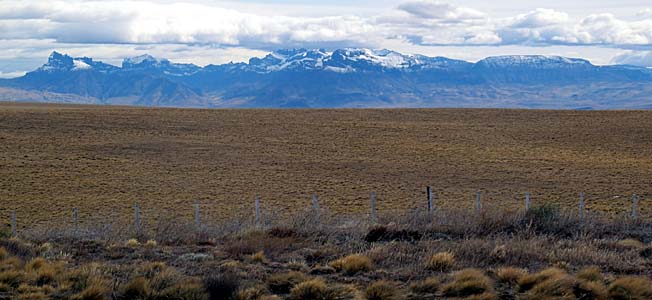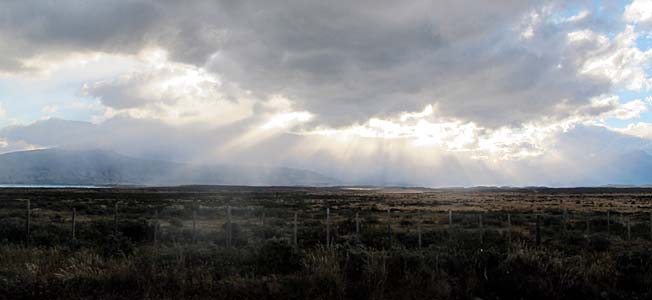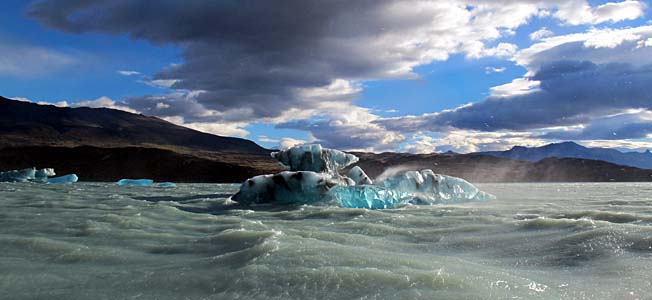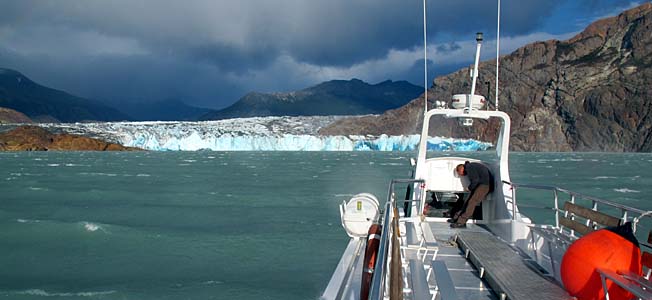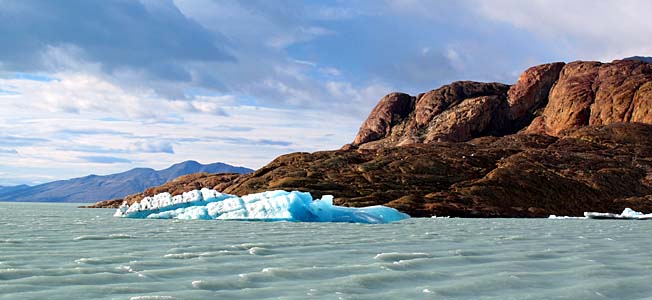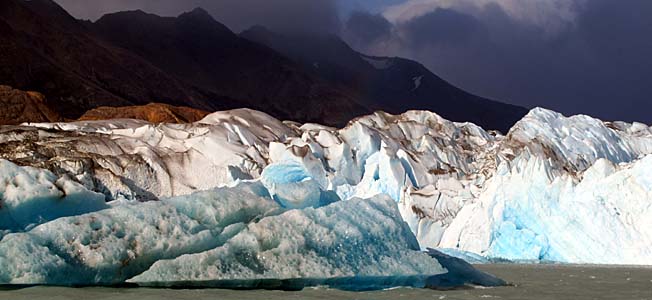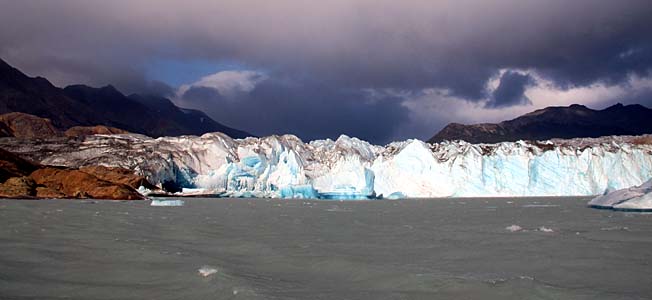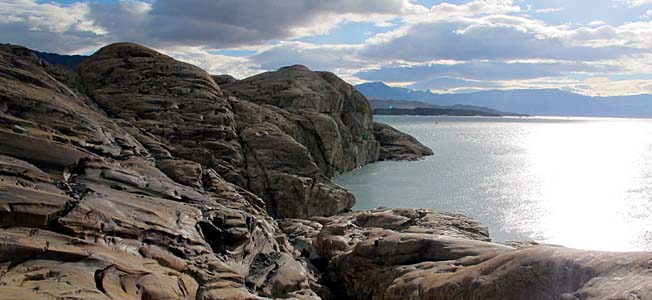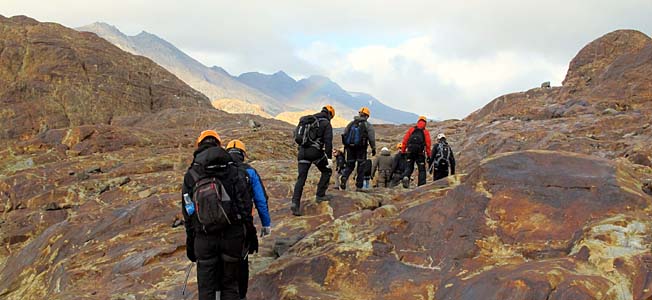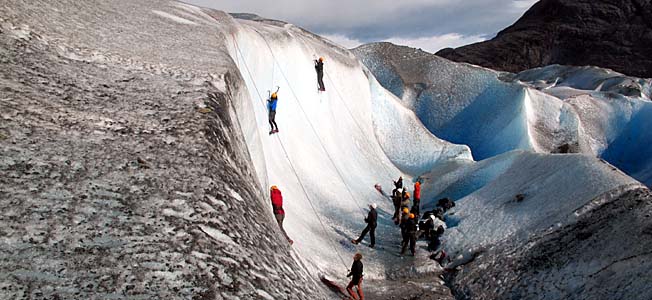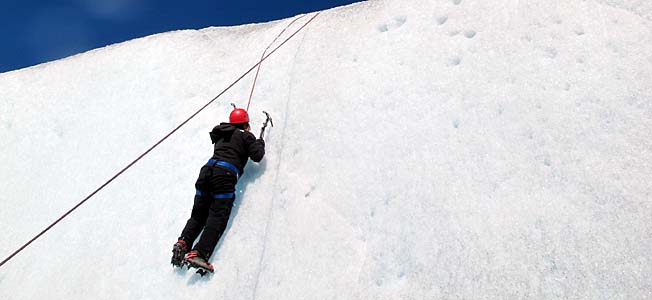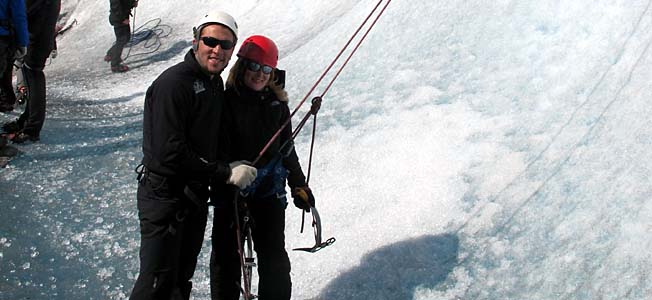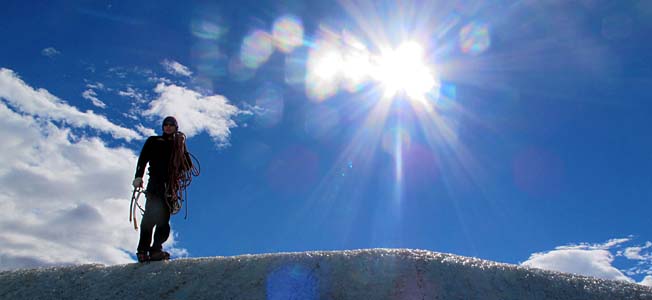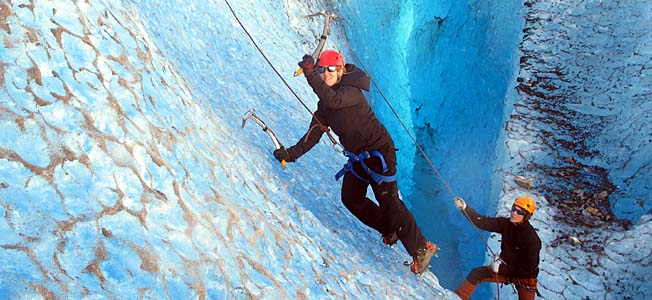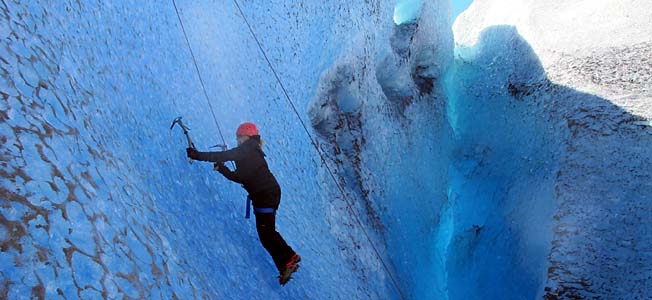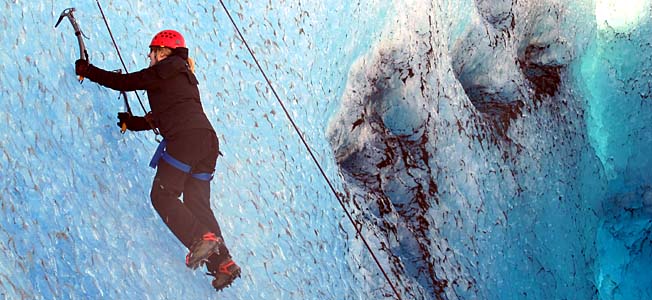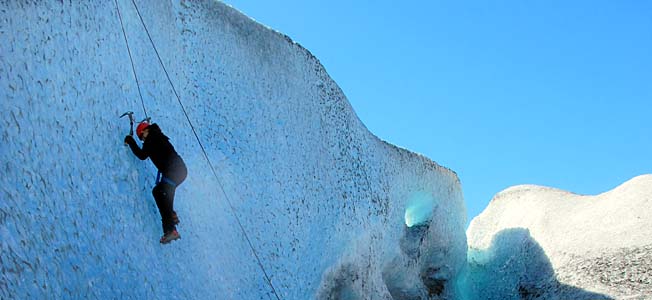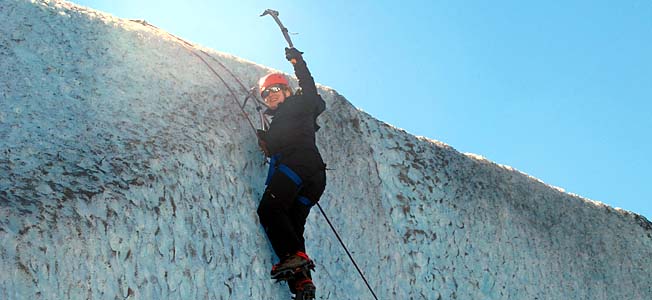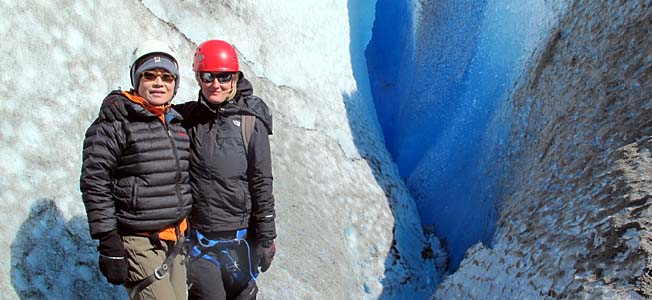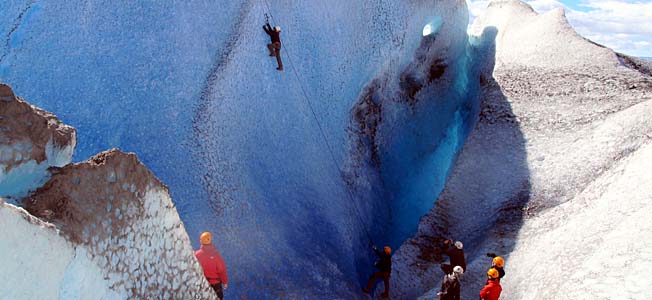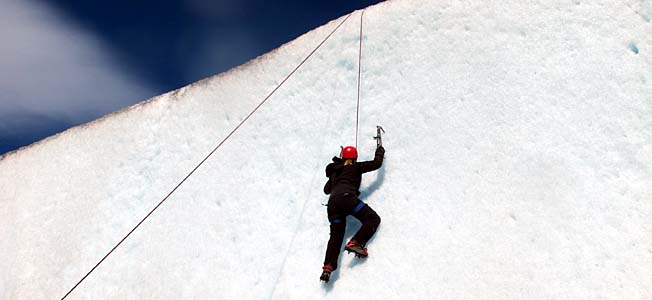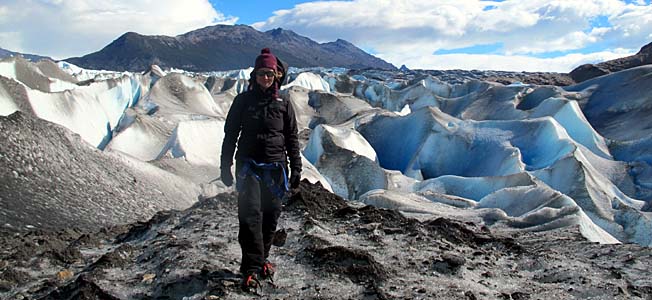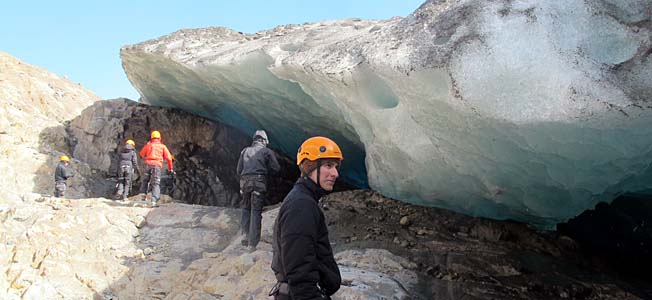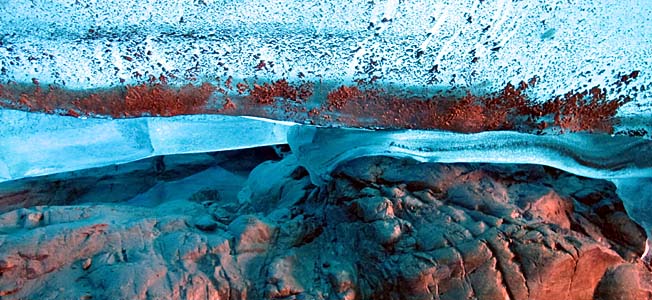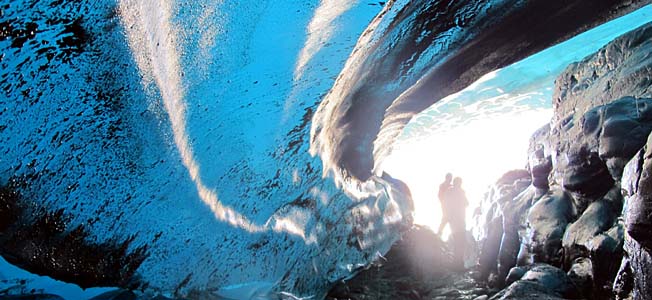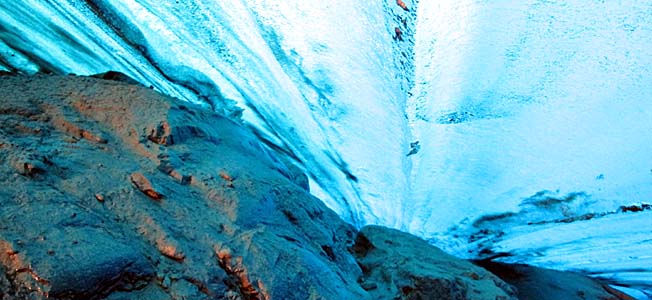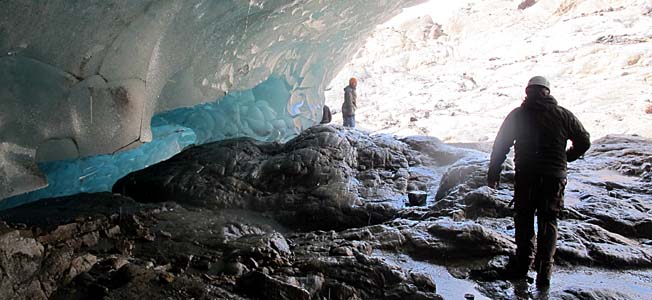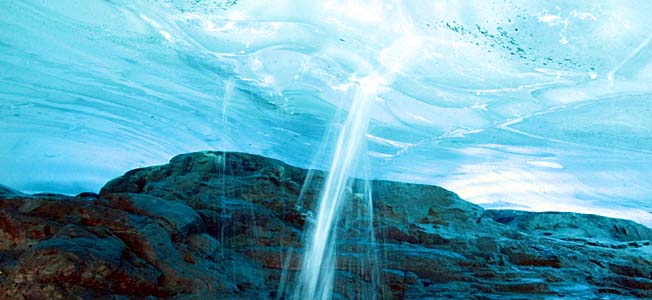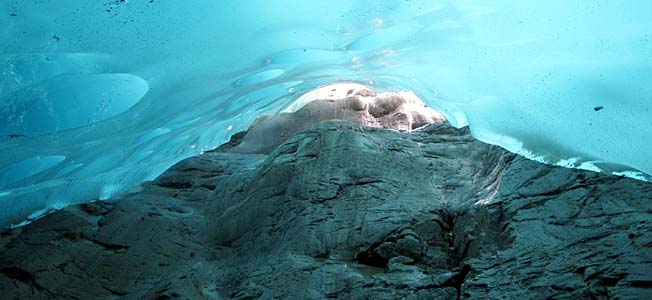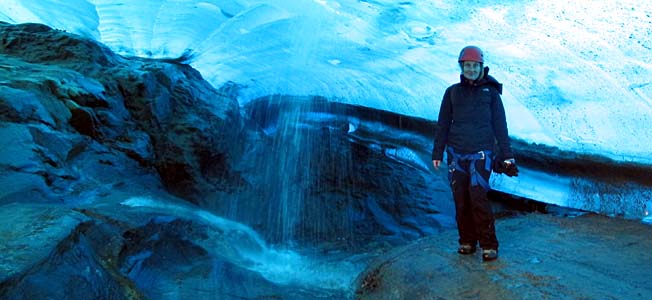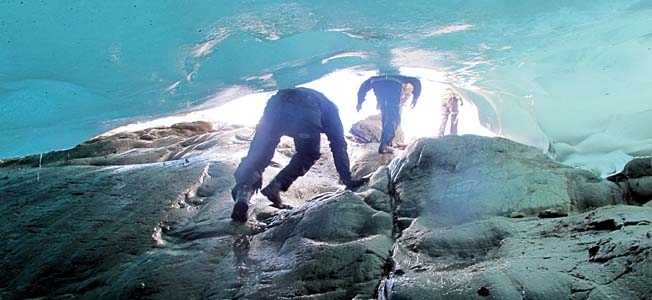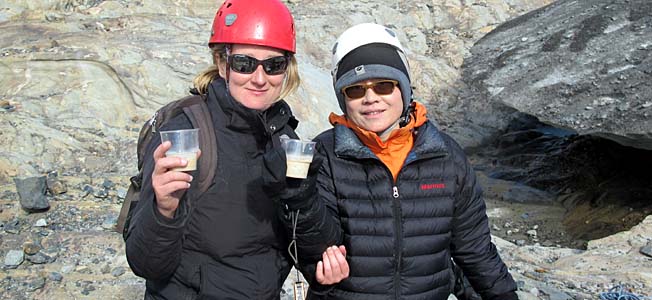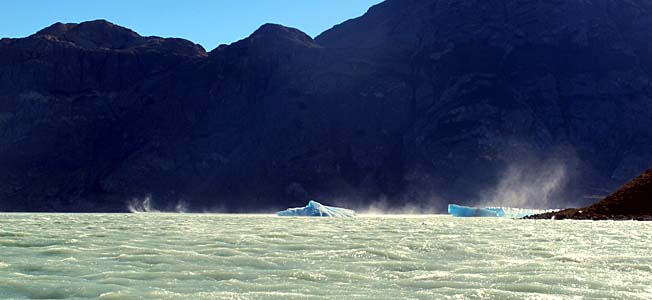The End of the World
There is a song by R.E.M. called “This is the End of the World as we know it” but where actually is the end of the world? Since a few decades we know the world isn’t flat and there is no edge you can jump off. So the end of the world is more or less a term to describe a place which is far off from everything else. This is true for Ushuaia which is also called “fin del mundo” (end of the world). And here I am. I travelled all around the world until I reached it, the end of the world.
I met with Jurie, my Japanese fellow traveler, for breakfast. Our hostel provides all ingredients for a good breakfast but you need to prepare it yourself in the kitchen and wash your dishes afterwards. While Jurie was turning the raw eggs provided into scrambled eggs, I took the oranges and squeezed fresh juice out of them. I never have been in a hostel where I needed to prepare breakfast to this extend but I really like the idea. Preparing your own food saves money which the hostel can use to provide better ingredients than it’s usually the case. In comparison most hostels have either no breakfast included or only a very basic one like toast and jam.
After breakfast Jurie and I went to see the El Martial Glacier. The glacier is right out of town and it only took us 15min by taxi to go there. When we arrived around 9am the chairlift to go up the first meters was not yet running and instead of waiting we spontaneously decided to walk up. It actually took us only half an hour to cover the distance of the chairlift since the terrain wasn’t very steep. Up on the mountain we had a wonderful view of Ushuaia or better to say we couldn’t really see the city but an impressive big cloud covering it. Also fascinating were the trees in their red, yellow and green color. Even in German autumn you are unable to admire such a blaze of color as you find it here.
We continued our hike up towards the glacier. It was steeper now and we walked as far as we could walk in hiking boots without the use of crampons. The glacier itself was less fascinating compared to what we saw last in the Los Glaciares National Park but it’s definitely worth coming up here.
We were back in town at lunch time and walked around in the center and in the harbor area. The center of the town is kind of touristy since Ushuaia is the main port for cruise ships going to Antarctica. There are numerous outdoor and souvenir shops as well as restaurants. It’s a dream of mine to go to Antarctica one day and I’m sure it will come true. For lunch we fancied some Sushi but unfortunately the Japanese restaurant was closed and so we shared a pizza instead.
In the afternoon more or less everyone from our travel group left for a visit of the Tierra del Fuego National Park. It has not only beautiful scenery but also a few sights to offer. One of them is the End of the World Train which goes around the national park and is considered to be the southernmost railway in the world. After we visited a station of the train we continued to a tiny post office in the park where you could send your mail with a “fin del mundo” stamp on it. Here I also got my passport stamped to document I have reached the end of the world.
Still in the park we went for a walk along the shore of the Roca Lake and visited the parks museum where we learned a lot about the local flora, fauna and the native inhabitants of the Tierra del Fuego (“Land of Fire”). We also tried to spot some beavers but all we could observe were their movements in the water. Beavers are actually a plague in the park and we saw a number of areas where they have destroyed the forest. Lastly, we went to the end of the Pan-American Highway which connects Alaska with the Tierra del Fuego, a distance of 17,848 km.
When we ended the tour our local guide told me in private I look a bit like Uma Thurman and he wants to go out for a drink with me tonight. Since I had enough local cultural experience with Pedro in Brasilia during the last weeks I didn’t join him.


